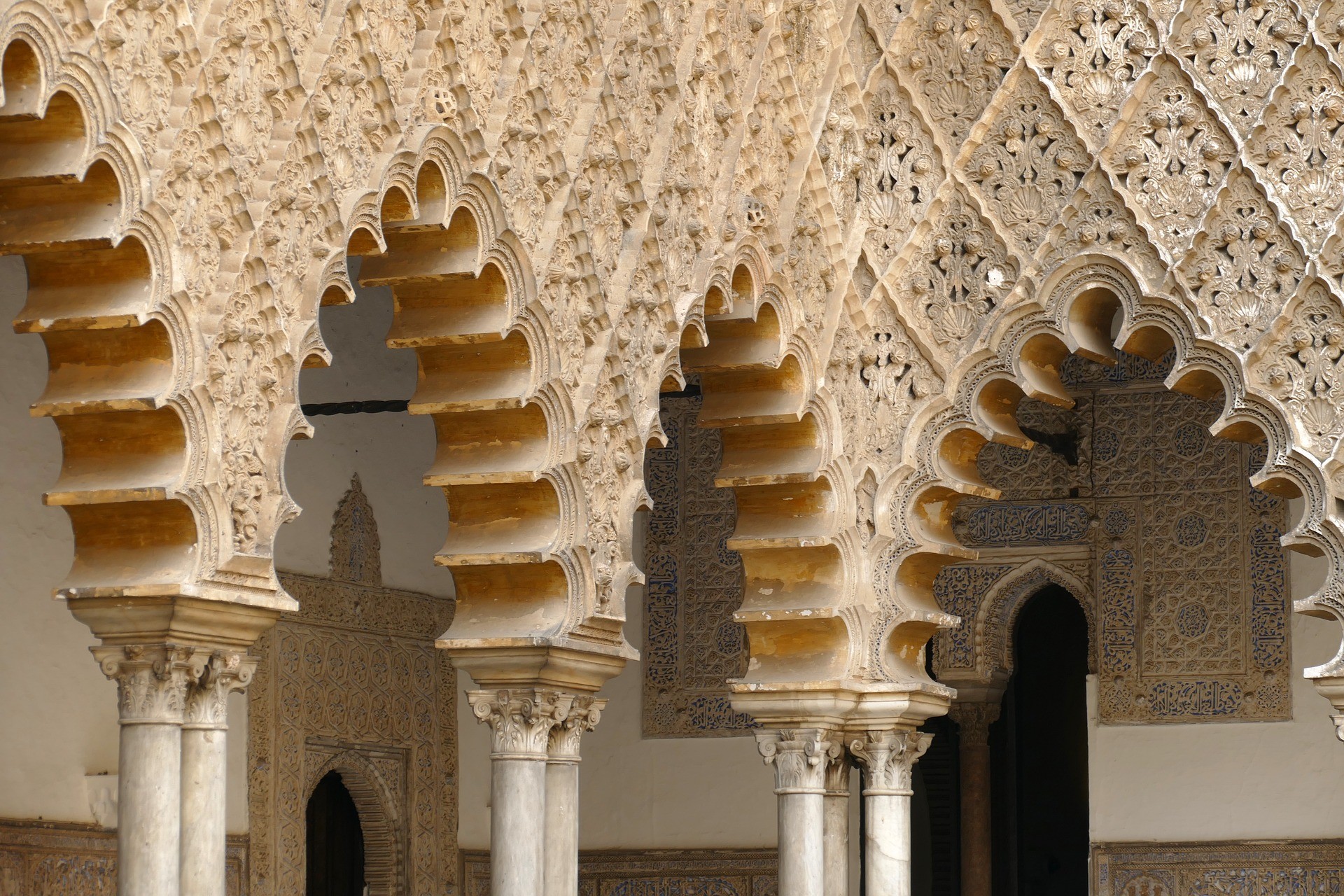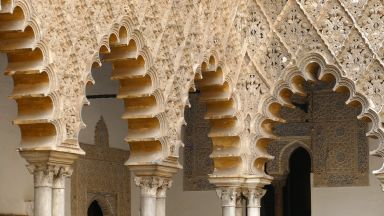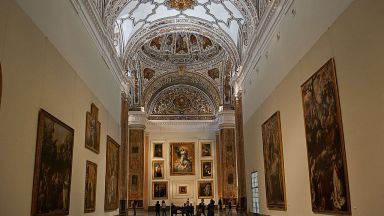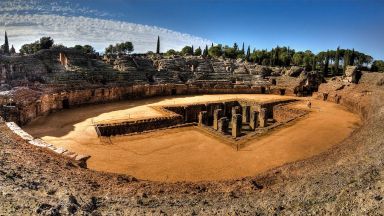Best of Seville's Palaces
This website uses affiliate links which earn a small commission at no additional cost to you.
The city of Seville has a regal history and nothing shows this off more than the many royal palaces of the city. You can explore their halls and courtyards of these historic buildings.
Many of these casa palacios, or mansions, look quite ordinary from the outside – perhaps as impressive entrance arch, but nothing else to make them out. Inside, you find beautiful arcaded patios with grand stone columns and potted plants.
Seville in a different way its discovering its beautiful palaces. In this post we will try to highlight the ten most spectacular palaces in the city:
Real Alcázar

Alcázar of Seville, is a royal palace in Seville, Spain, built for the Christian king Peter of Castile. It is one of the most important monuments in Seville and one of the oldest palaces in use in the world, therefore it´s a must-visit when you come to Seville.
The palace is not only a place with great historical relevance, as it mixes styles of Muslim, Gothic, Renaissance, Baroque and Romantic art it is also considered one of the most beautiful and curious architectural ensembles in the country.
Declared a World Heritage Site by UNESCO in 1987 receives more than 1 million visits per year.
Location: Patio de Banderas, s/n 41004 Sevilla Spain | Hours: From October to March: 9.30 am – 5 pm From April to September: 9.30 am – 7 pm Closed: January 1st and 6th, Good Friday and on December 25th | Price: €11.50 | Website
Read more about Royal Alcázar Palace
Casa Pilatos

Casa Pilatos was built in the late 15th century and is a combination of Italian Renaissance and the Spanish Mudejar style.
During the 16th century, the building received a Renaissance overhaul as a result of the close relationship of leading family members with Italy
Further changes in the mid-19th century to added to its picturesque appearance, a harmonious synthesis of the Gothic-Mudejar, the Renaissance and Romanticism.
Location: Plaza de Pilatos,1, 41003 Sevilla, Spain | Hours: November to March: Mondays - Sundays 9:00 to 18:00 April to October: Mondays - Sundays 9:00 to 19:00 | Price: Ground floor: 6 € Ground and upper floors: 8 €. If you’re an EU citizen, show your ID card or Passport and you can access this palace for free on Monday, from 3 pm to 7 pm. | Website
Read more about Casa de Pilatos
Casa Palacio de la Condesa de Lebrija

The Palace of the Countess of Lebrija is a magnificent 16th century Palace and Museum. It had belonged to different noble families of the city until it was acquired in 1901 by the Countess of Lebrija to house her collection of antiquities
The Palace has an excellent set of Roman mosaics, as well its rooms treasure a multitude of archaeological remains of incalculable historical and artistic value.
Location: Palacio de Lebrija, Calle Cuna, 8, 41004 Sevilla, Spain | Hours: 10.30am-7.30pm Mon-Fri, 10am-2pm & 4-6pm Sat, to 2pm Sun Sep-Jun, 10am-3pm Mon-Fri, to 2pm Sat Jul & Aug | Price: 5€ for the lower floor and 8€ for both floors | Website
Read more about Palacio de Lebrija
Casa de las Dueñas

This spectacular palace was built between the 15th and 16th centuries on top of the remains from the monastery of Santa María de las Dueñas.
Since its construction it has always belonged to noble families of Seville until in 1612 that it passed into the hands of the Casa de Alba thanks to the marriage between Antonia Enríquez de Ribera and Fernando Álvarez de Toledo, who would be the VI Duke of Alba.
Location: Palacio de las Dueñas en sevilla, Calle Dueñas, 5, Seville, Spain | Hours: 10am-8pm Apr-Oct, to 6pm Nov-Mar | Price: €8 | Website
Read more about Palacio de Las Dueñas
Casa de los Pinelo

The early 16th century palatial house of the Pinelo is now home to the Royal Academies of Fine Art. The Casa de los Pinelo is modeled on a medieval palace-mansion enriched with Renaissance, and especially Mudejar elements and is built around around 4 courtyards and uncovered areas.
Location: Casa de los Pinelo, Calle Abades, Seville, Spain | Hours: Monday - Friday: 10:30 / 11:30/ 12:30 Closed on Saturday and Sunday | Price: €5 | Website
Read more about Casa de los Pinelo
Palacio de los Marqueses de la Algaba

Commissioned by the Lord of the Algaba in 1474, it is one of Seville’s classic Mudéjar-style palaces. The palace built around a lovely central courtyard.
The palace also houses a small museum showcasing Mudéjar pieces from the 12th to 20th centuries.
Location: Palacio Marqueses de la Algaba Plaza Calderón de la Barca, s/n 41003 Sevilla Spain View o | Hours: 10am-2pm & 6-9pm Mon-Fri, to 2pm Sat Apr-Oct, reduced hours Nov-Mar | Price: Free
Read more about Palacio de los Marqueses de la Algaba
Casa Salinas

Located in the heart of Seville’s Old Town, Casa Salinas is a 16th-century palace house.
Since the beginning of the 20th century the house was owned by the Salinas family who have restored it to its original appearance.
Location: Palacio de los marqueses de Salinas, Calle Mateos Gago, 39 41004 Sevilla Spain | Hours: 10am-6pm Mon-Fri mid-Oct–mid-Jun, to 2pm mid-Jun–mid-Oct | Price: €8/4 | Website
Read more about Casa Salinas de Seville
San Telmo Palace

The Palace of San Telmo is currently where the Presidency of the Andalusian Government is settled.
Its stunning main façade dates from 1754 and is one of the most famous of Baroque-Churrigueresque architecture.
Location: San Telmo Palace, Calle Palos de la Frontera, 41004 Sevilla, Spain | Hours: To visit Email: [email protected], with full name and ID number of person making the reservation. Visits: Thursdays (4:00 pm – 9:00 pm), Saturdays (10:00 am – 2:00 pm and 4:00 pm – 8:00 pm). | Price: Free | Website
Read more about Palacio de San Telmo
Palacio de Villapanés

The place was built in the 18th century by de Marqués of Torreblanca del Aljarafe. Originally the Place only included the main house, its rooftops and beautiful viewpoints and a garden.
Since December 2009, the building is protected as a Site of Cultural Interest of the city of Seville.
Location: Hotel Palacio de Villapanes Calle Santiago, 31 41003 Sevilla Spain | Hours: N/A | Price: N/A | Website
Read more about Palacio de Villapanés
This website uses affiliate links which earn a small commission at no additional cost to you.



